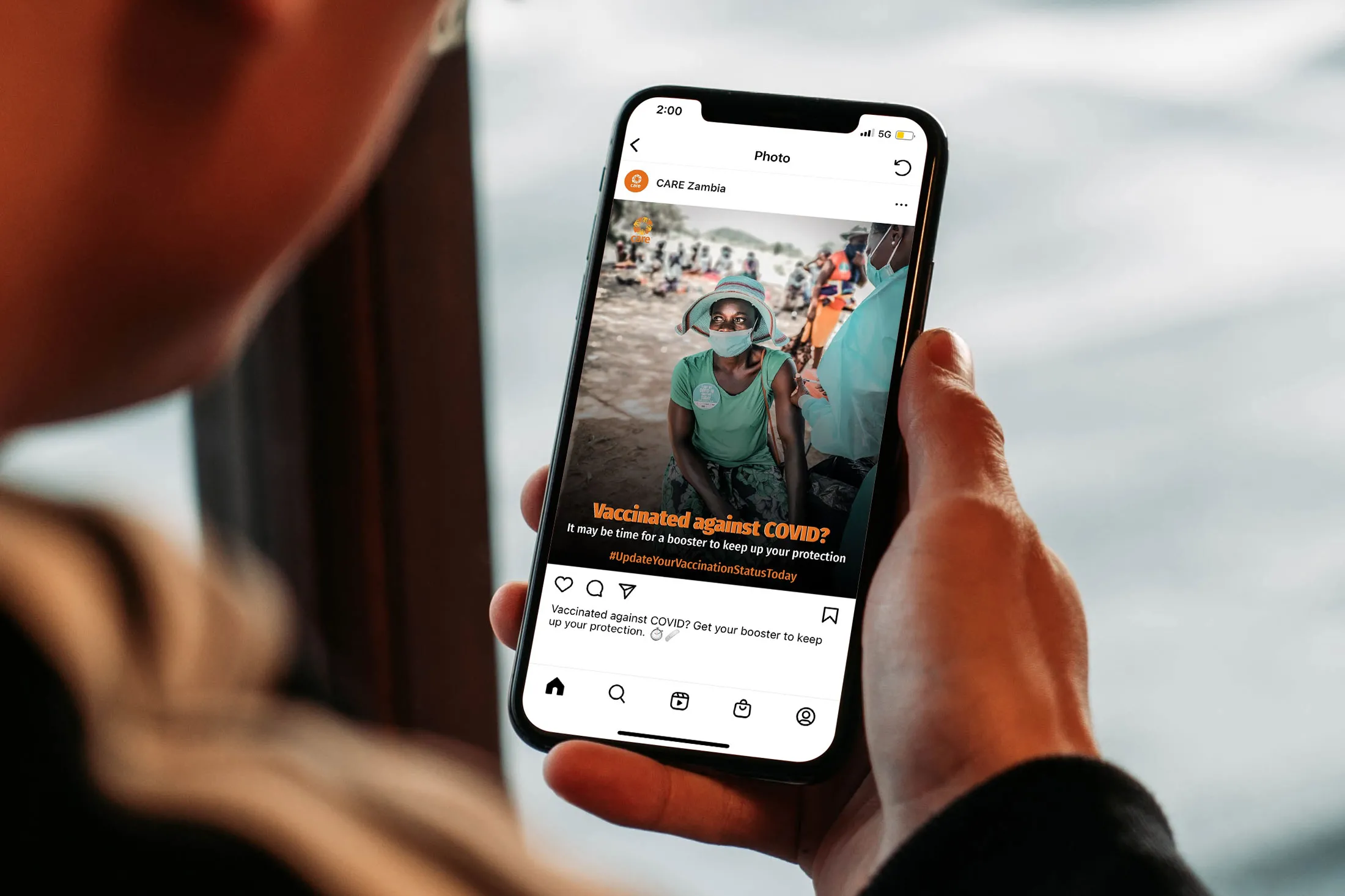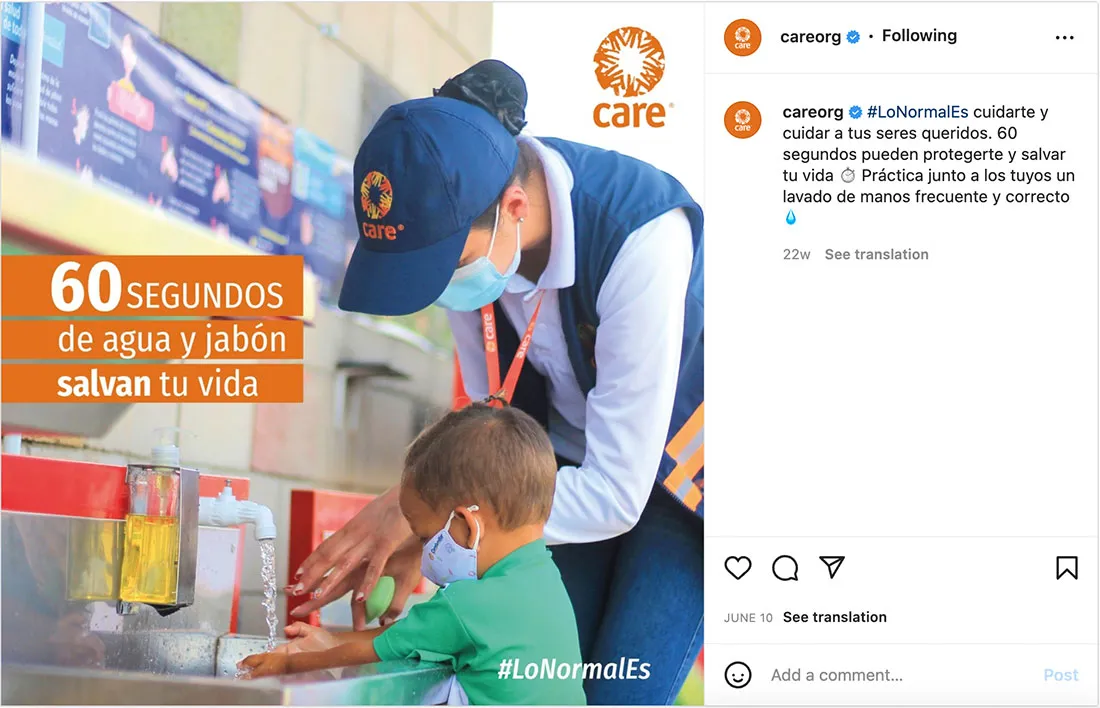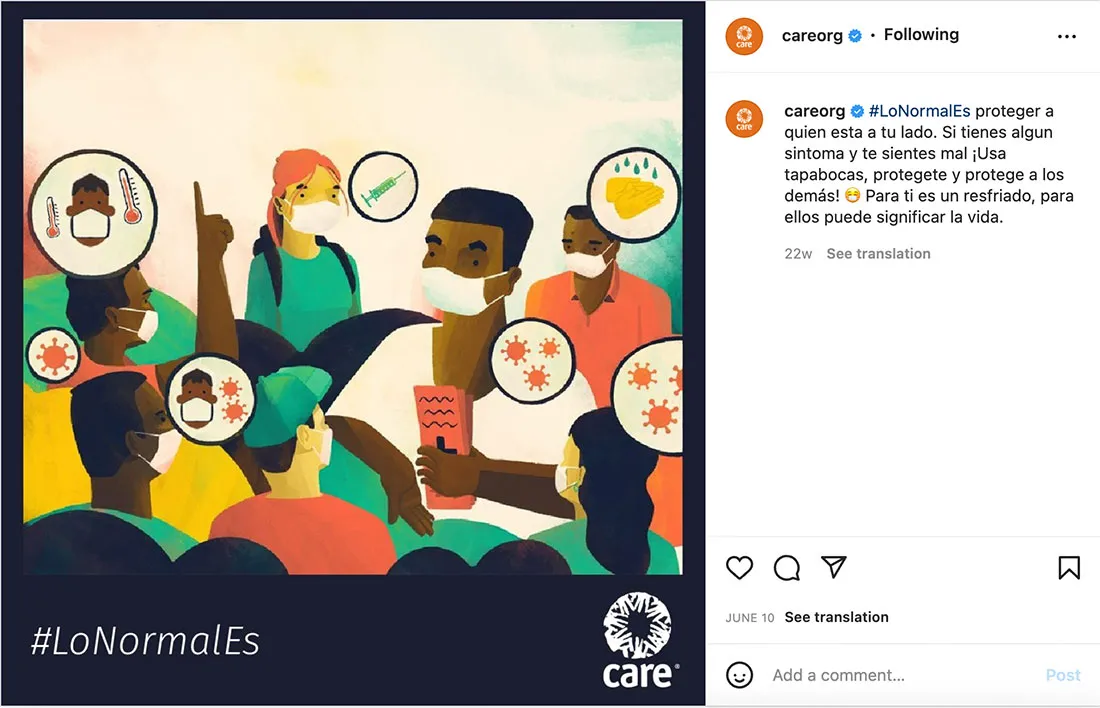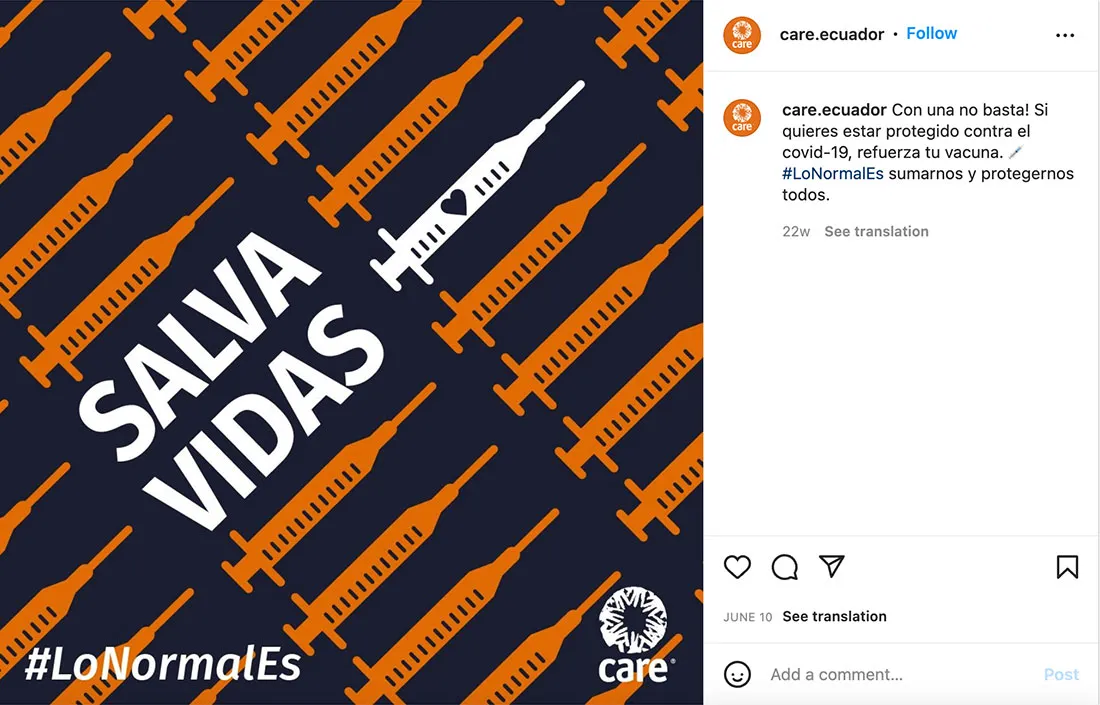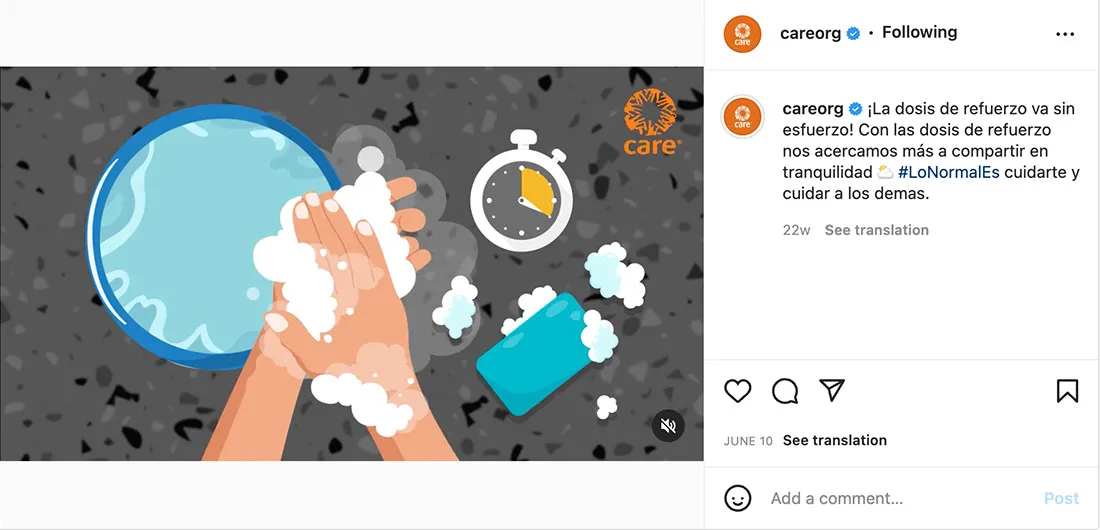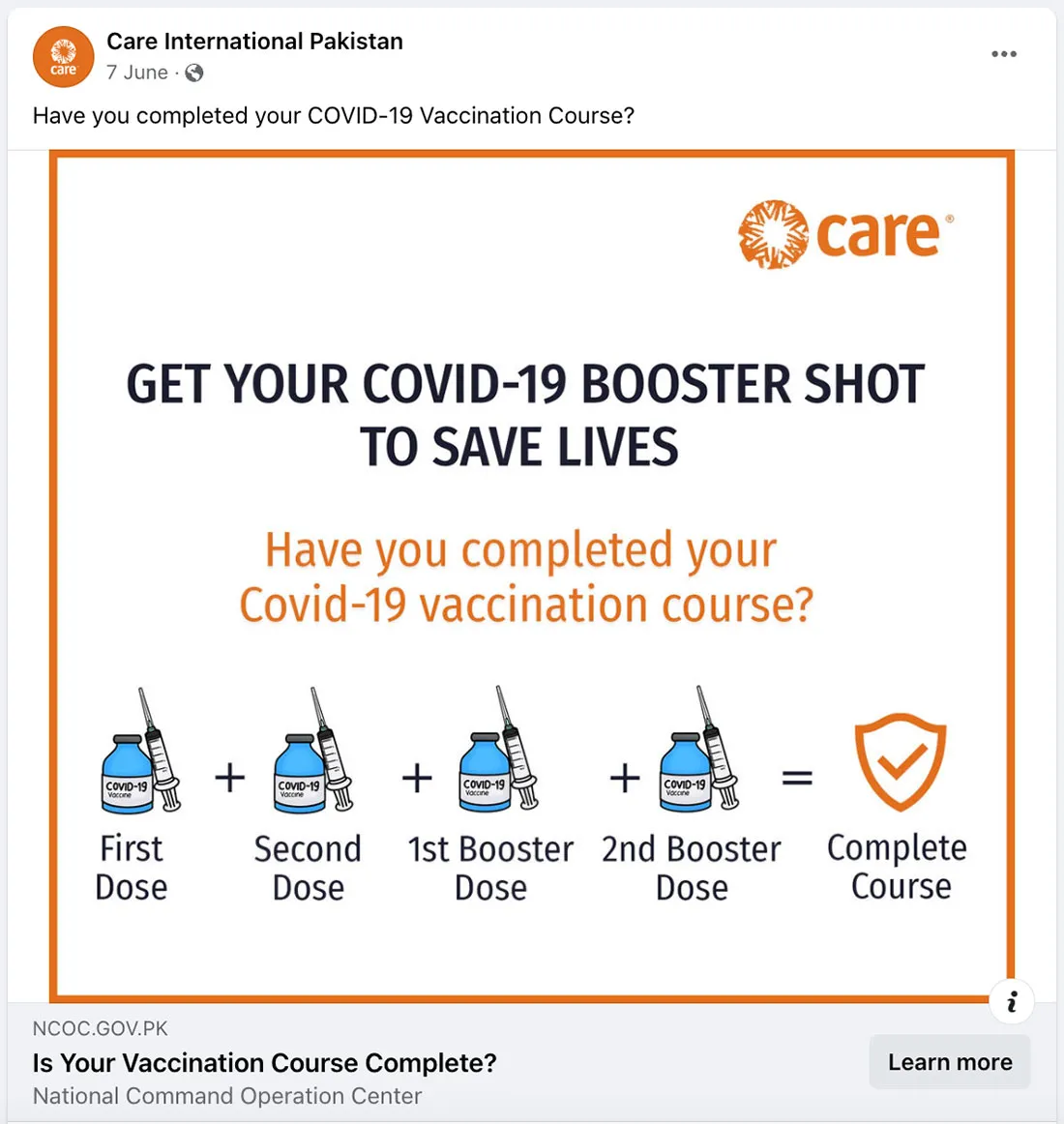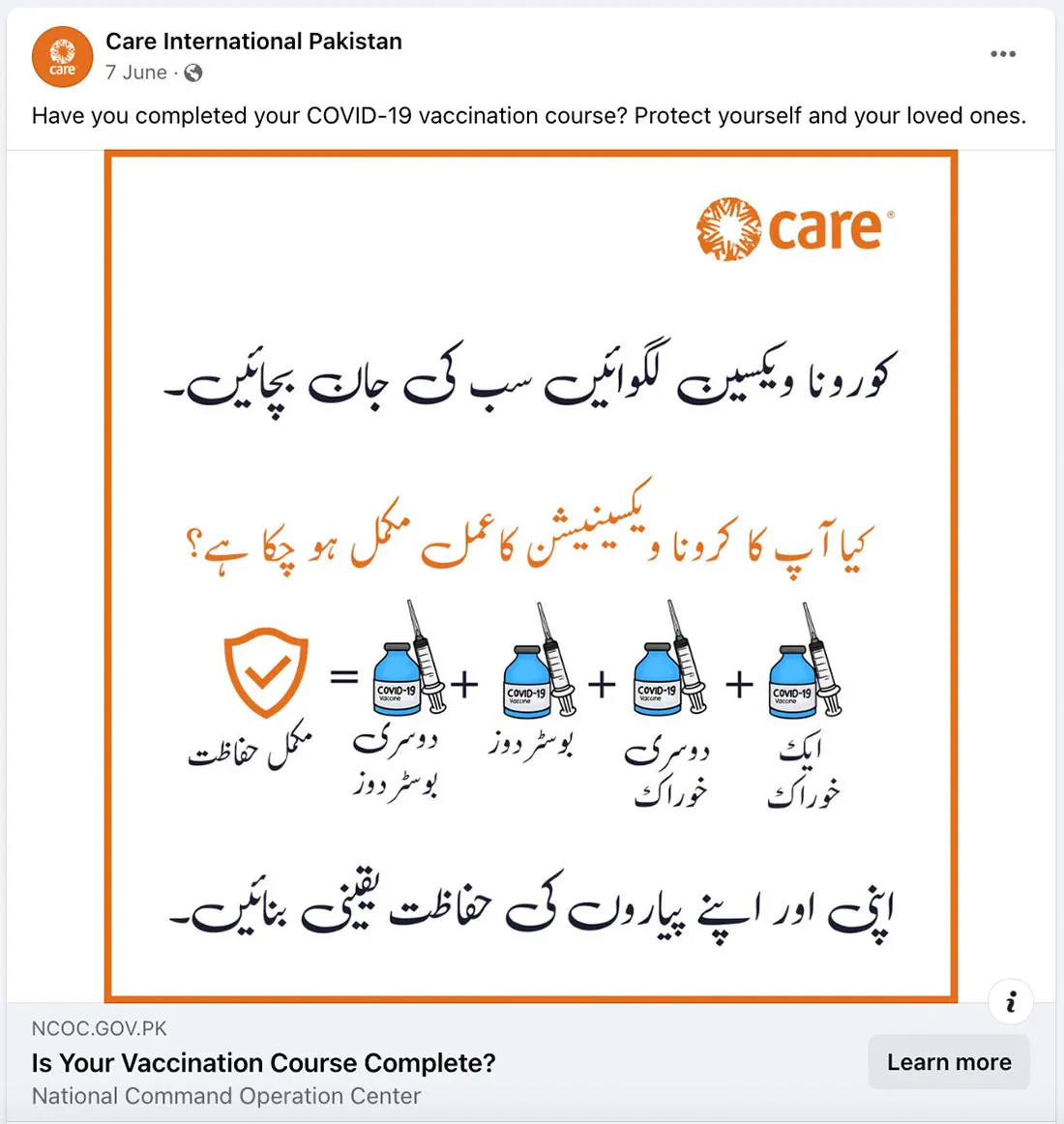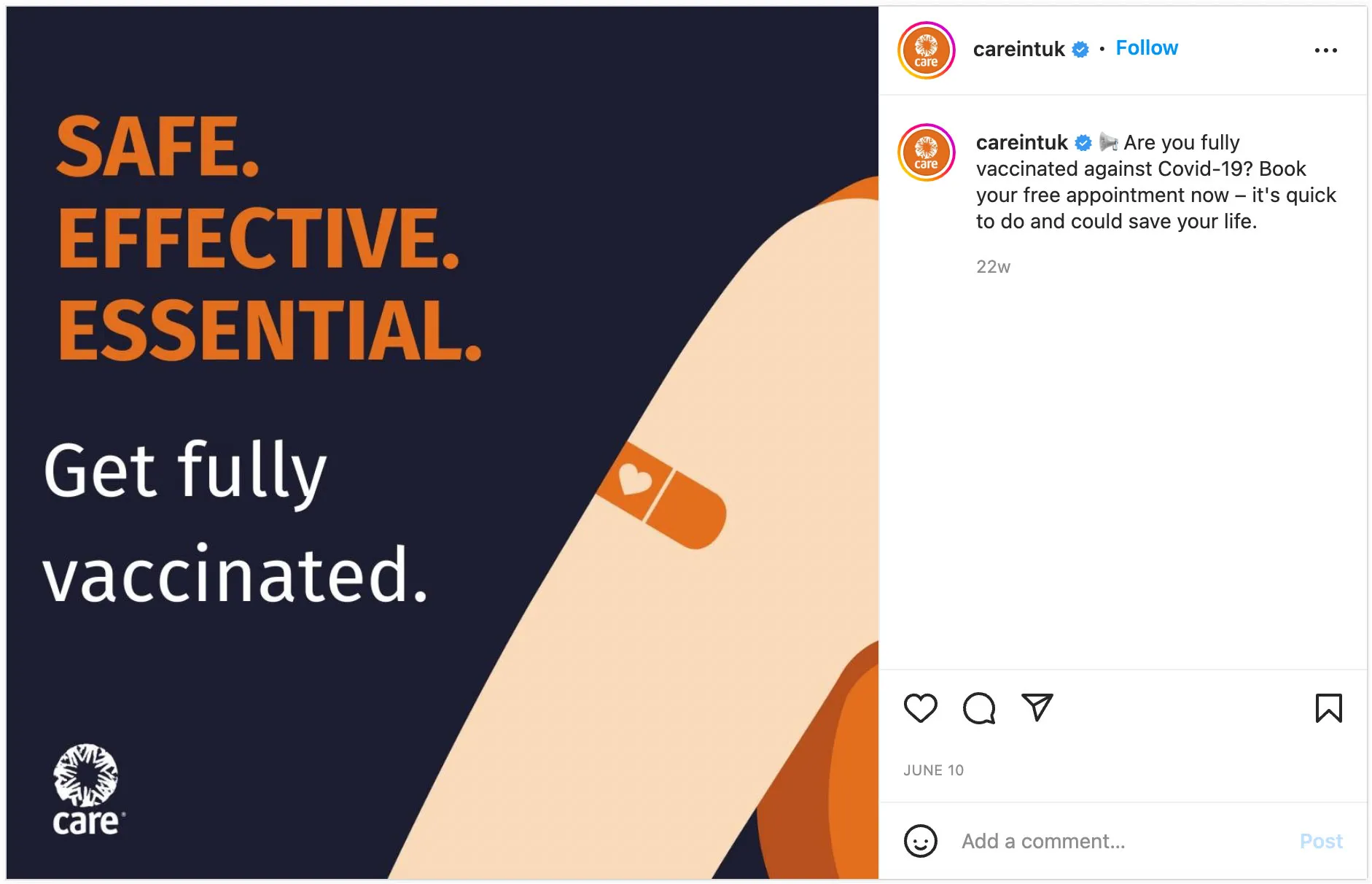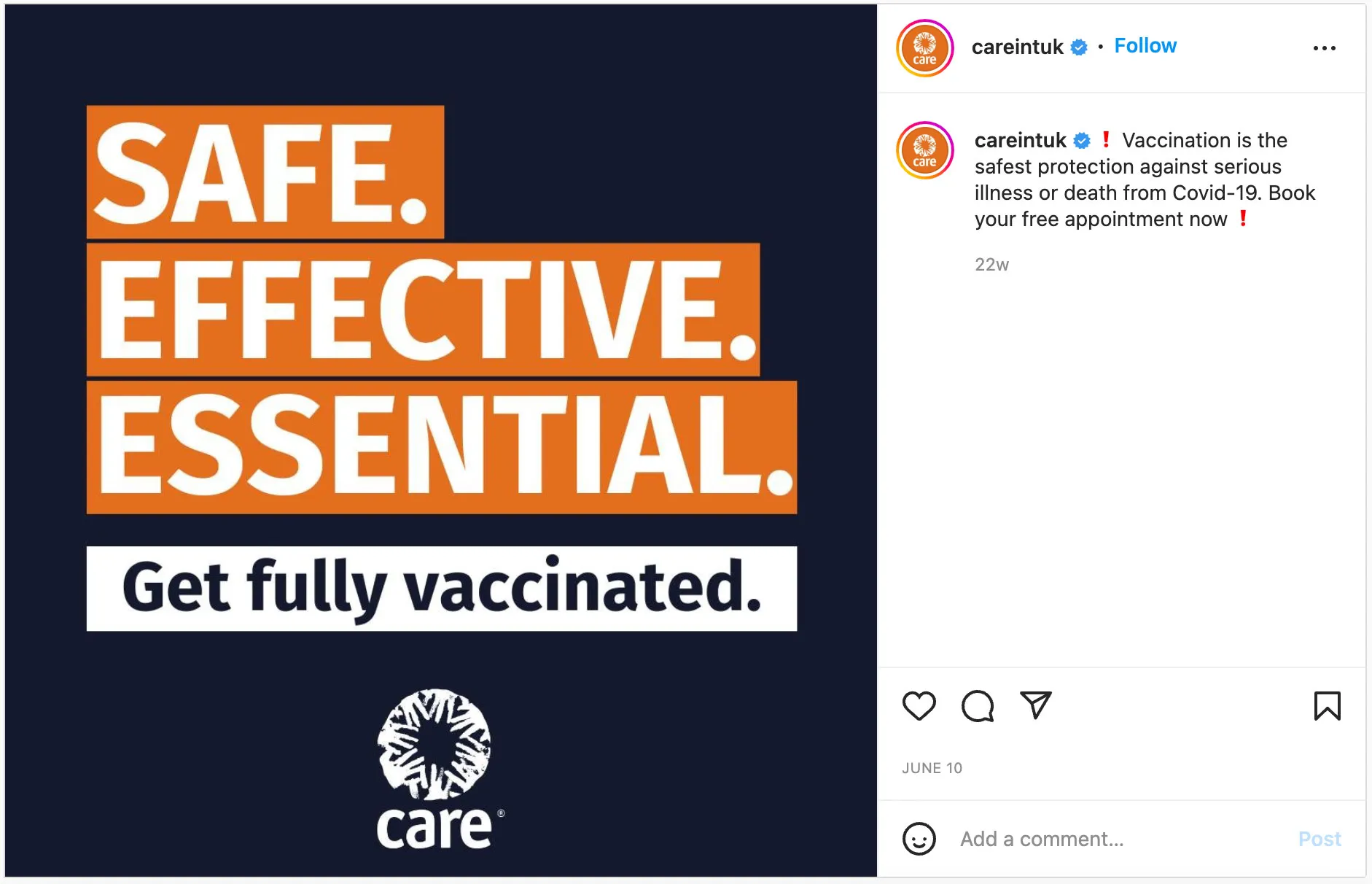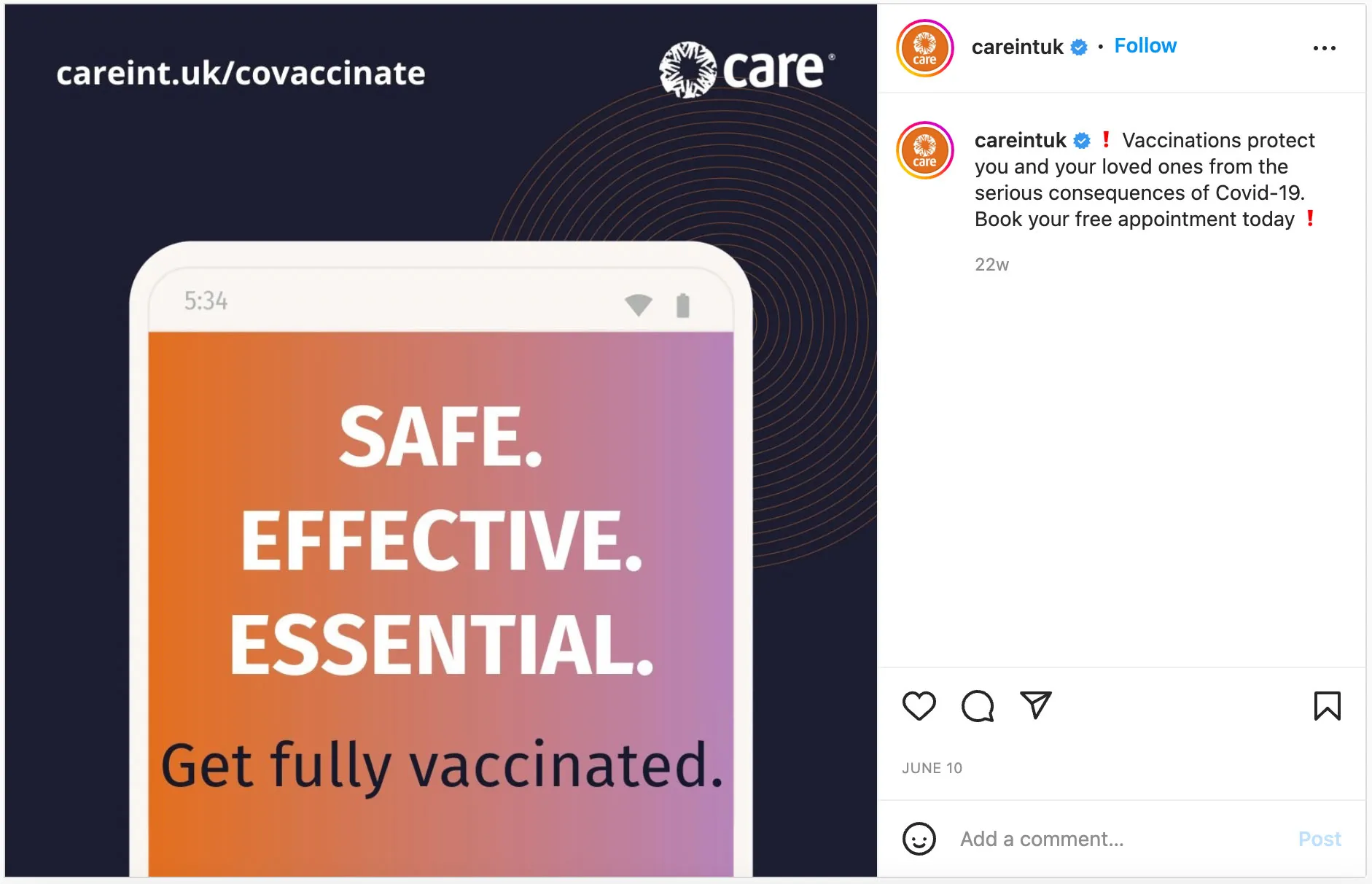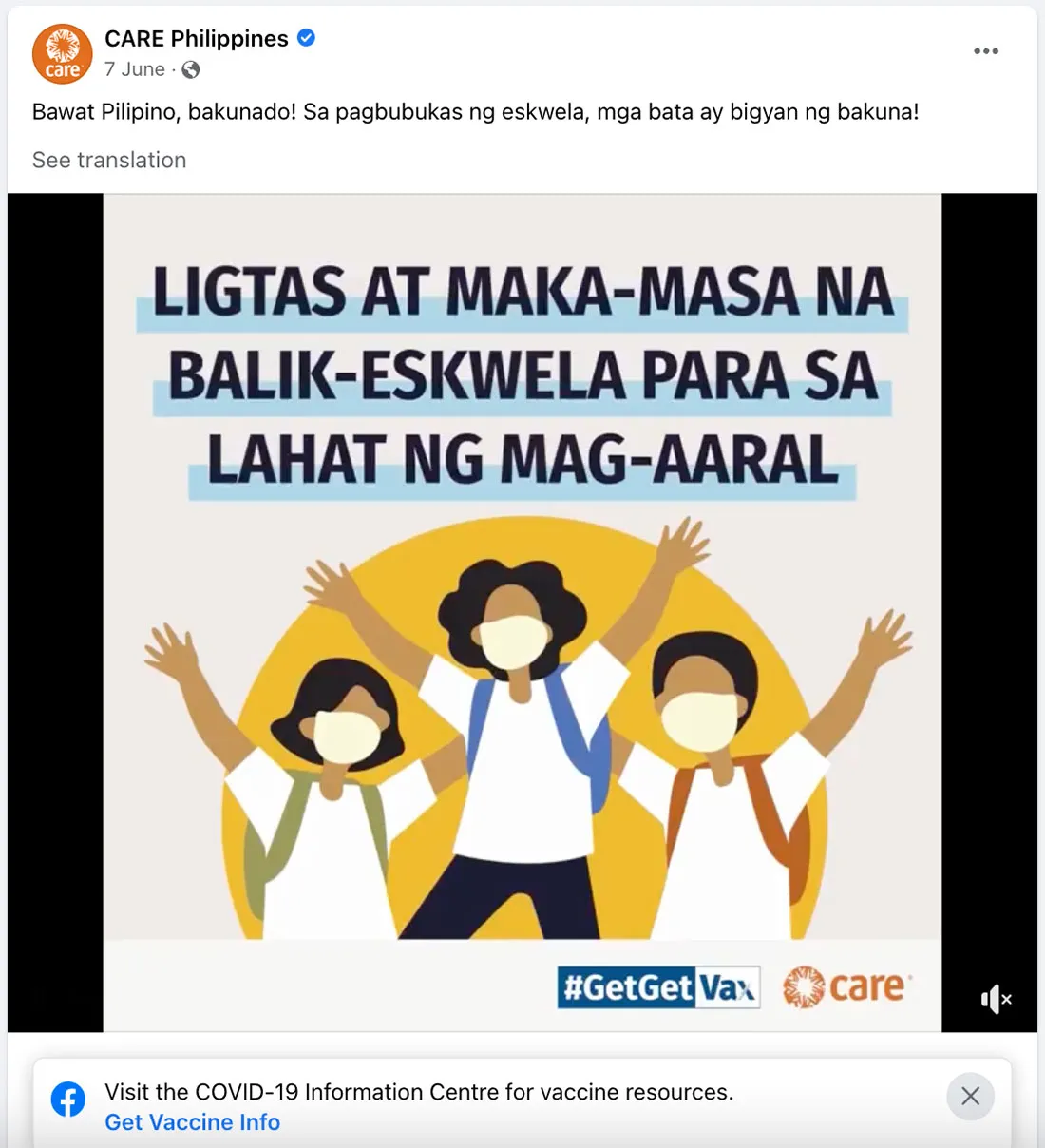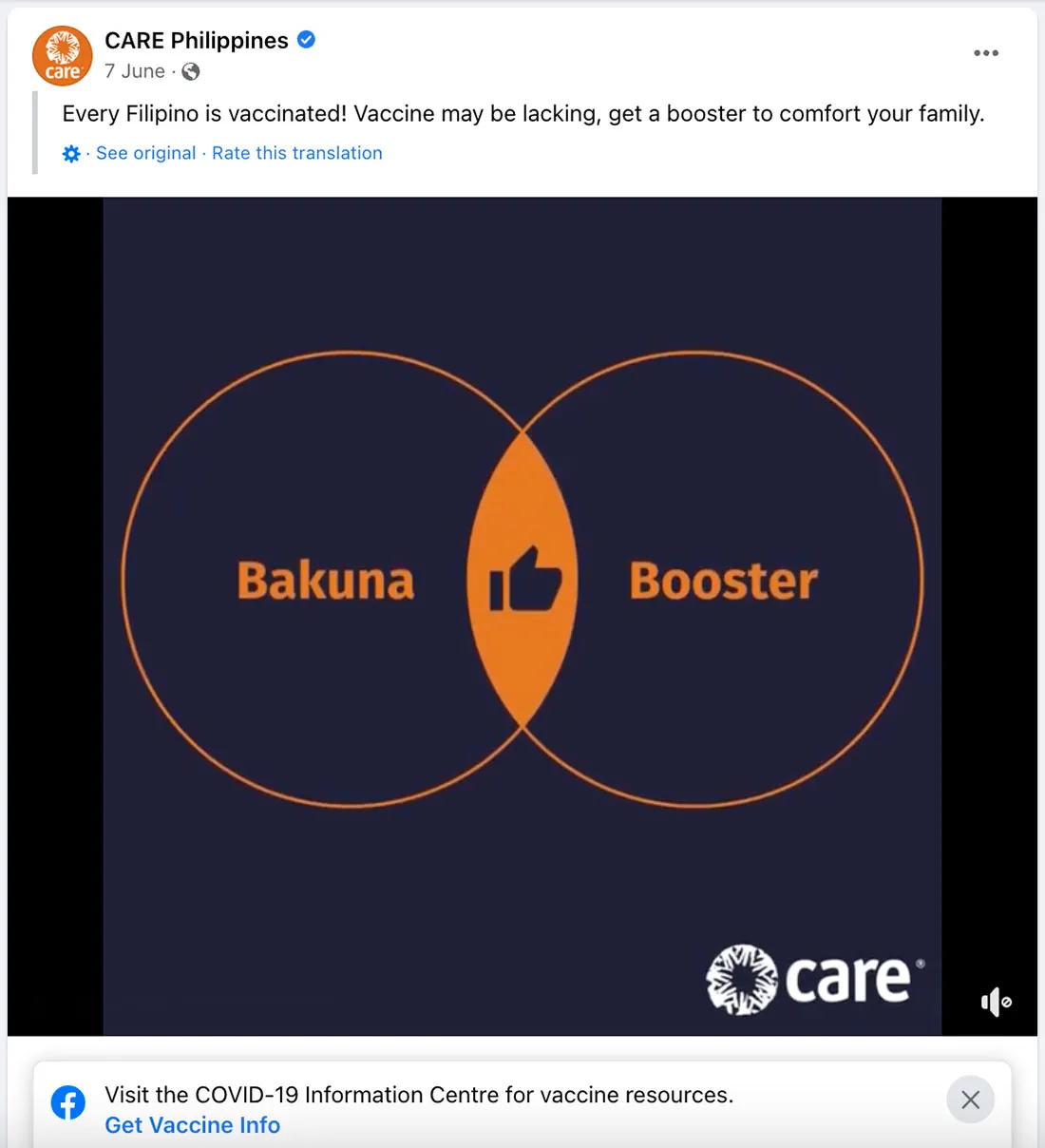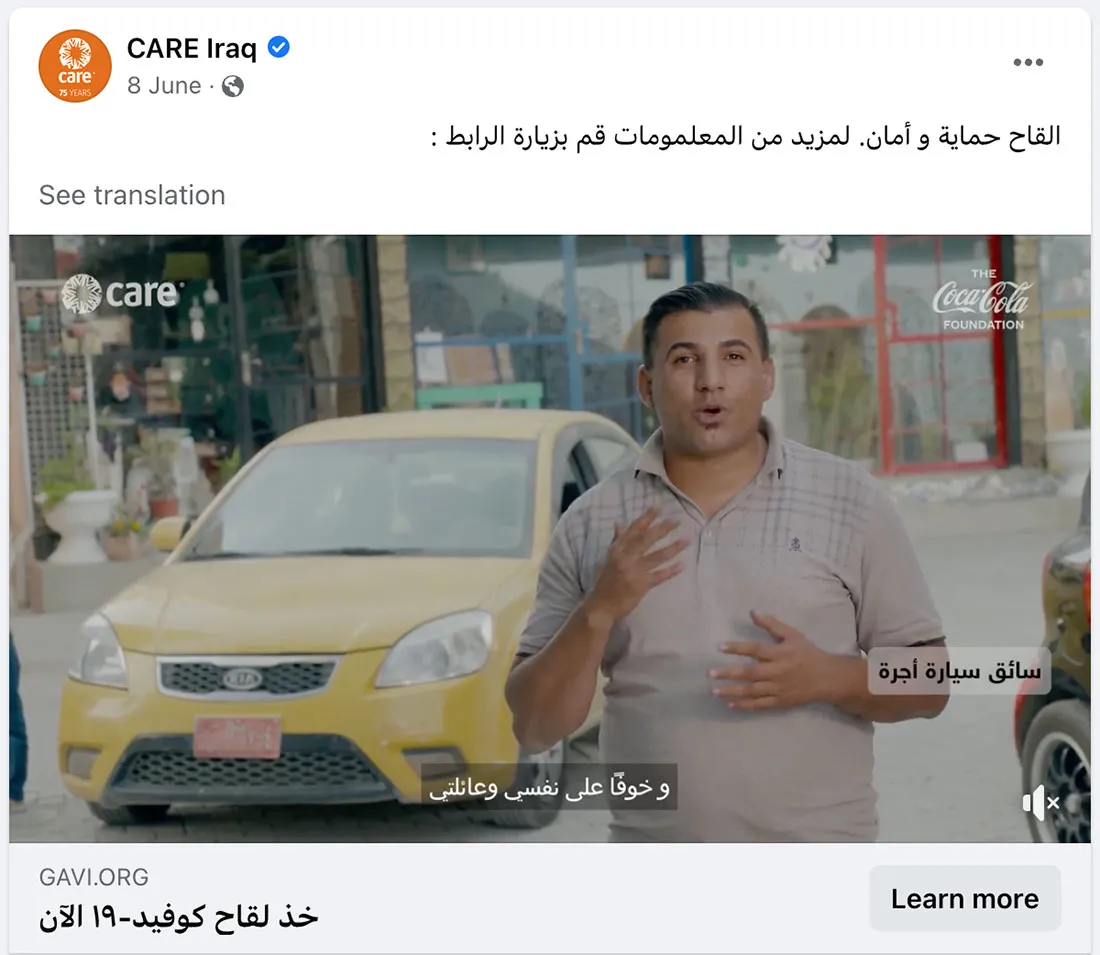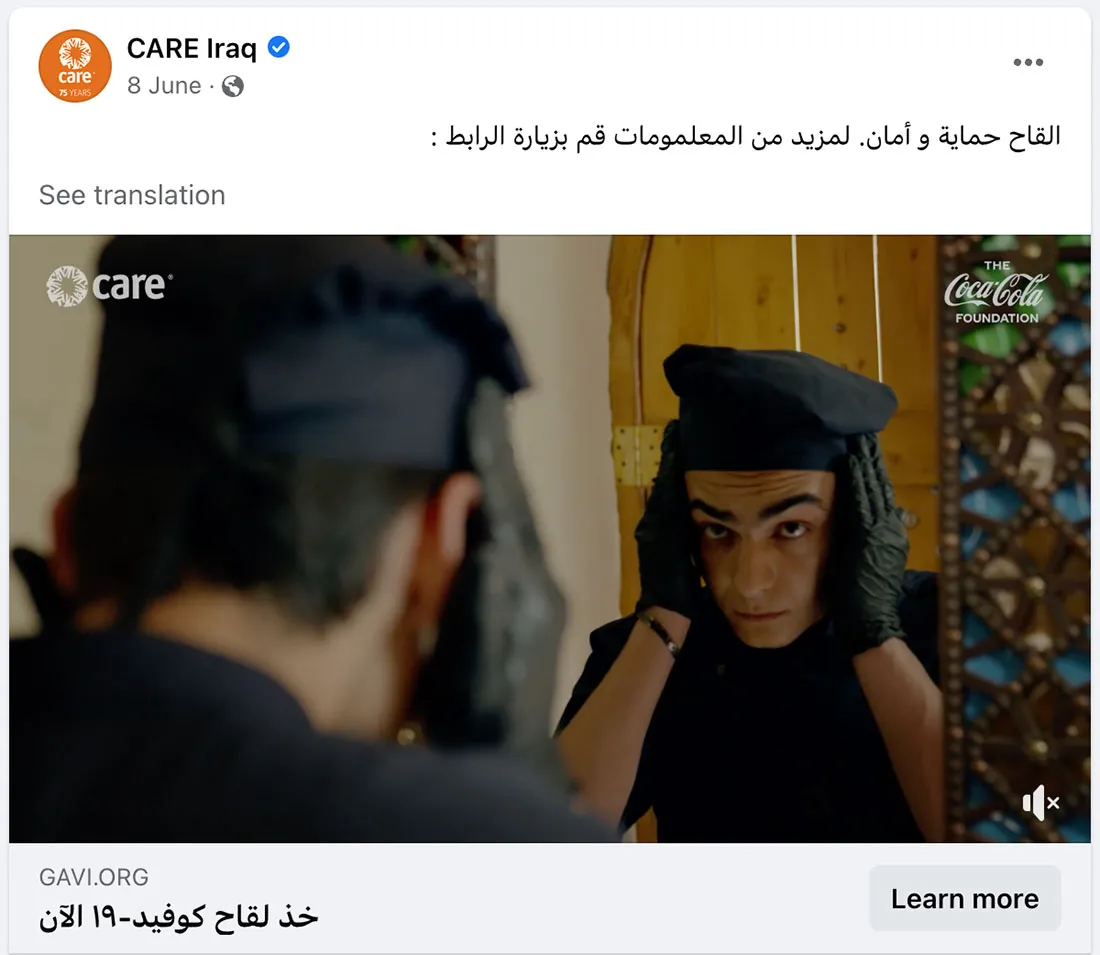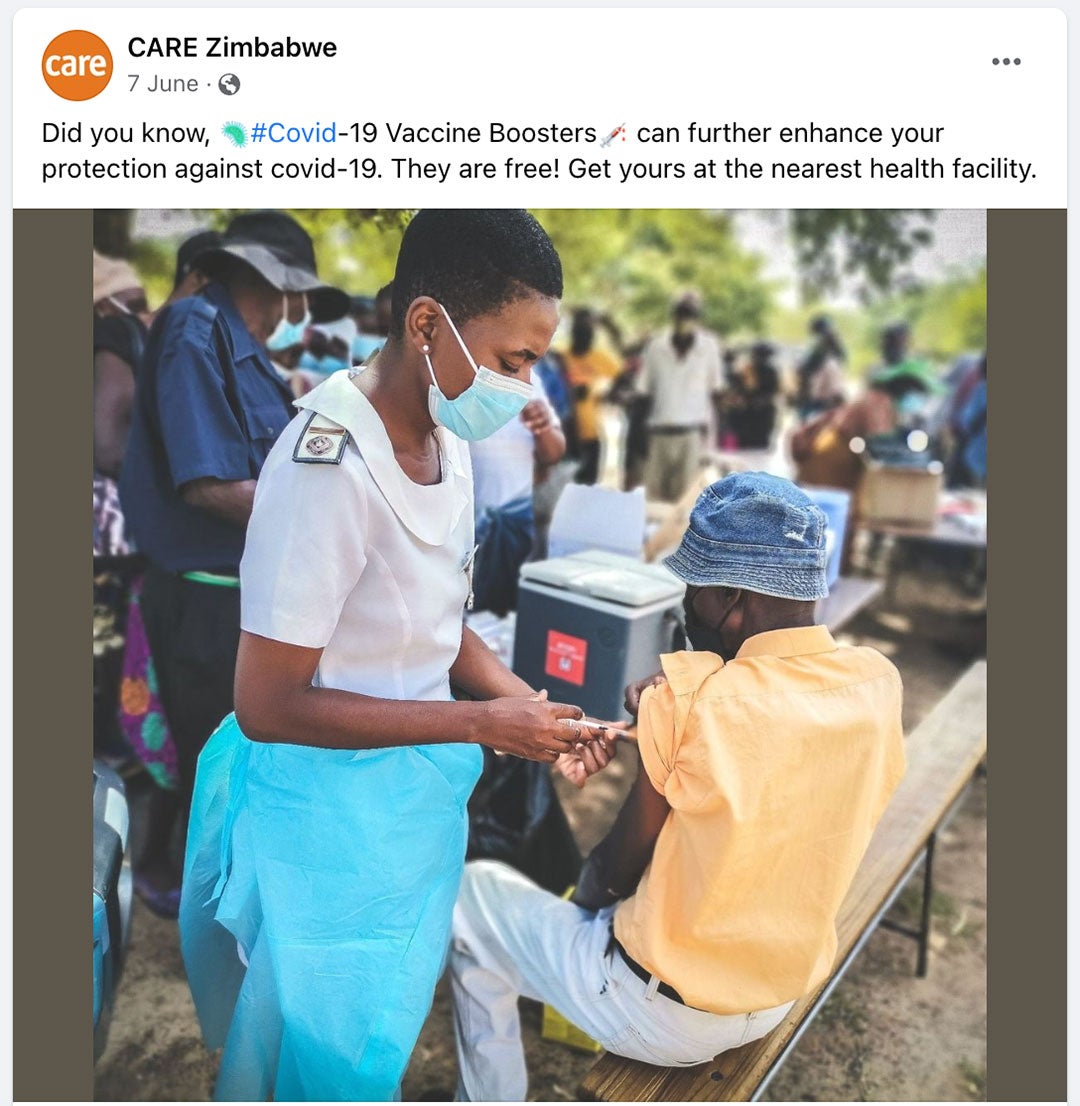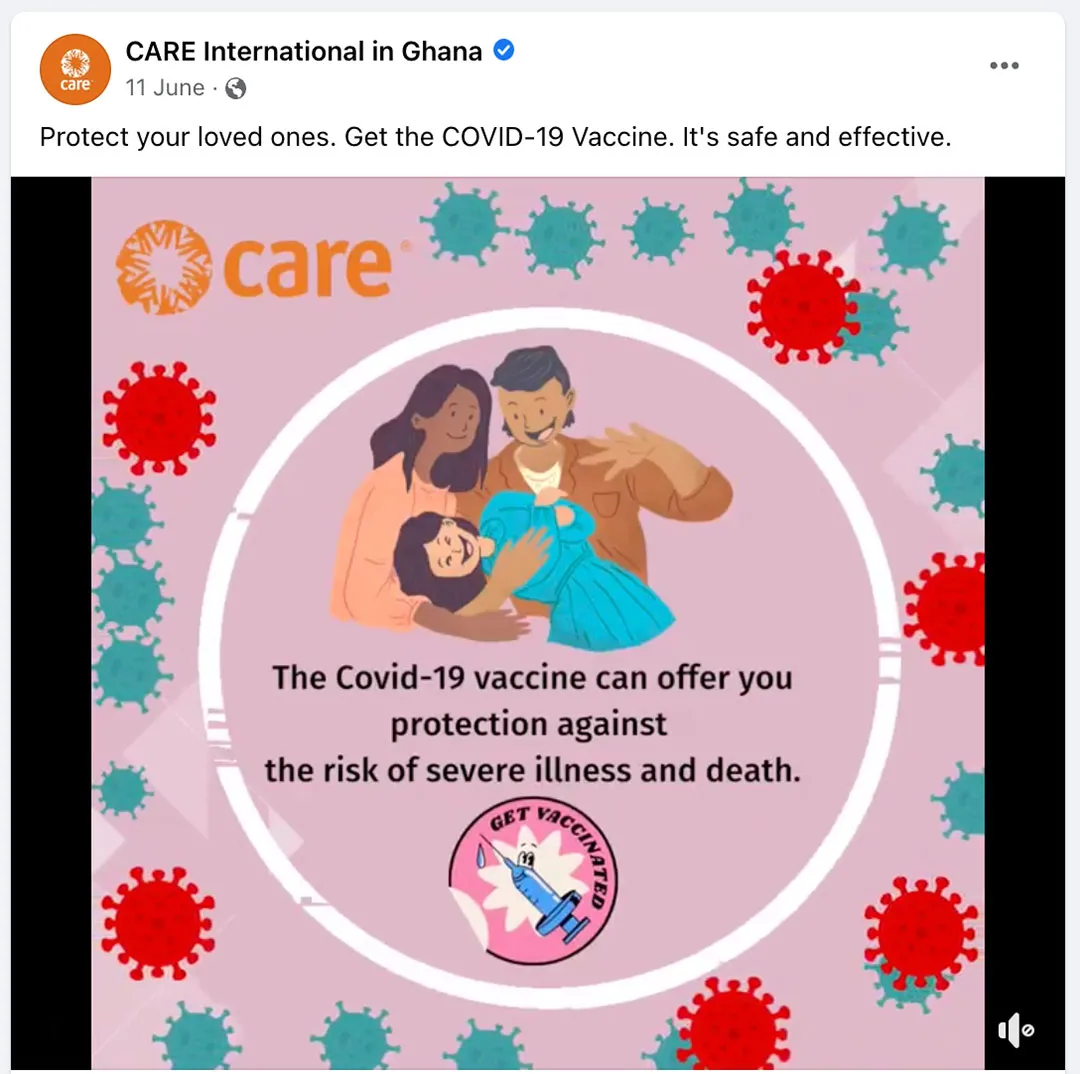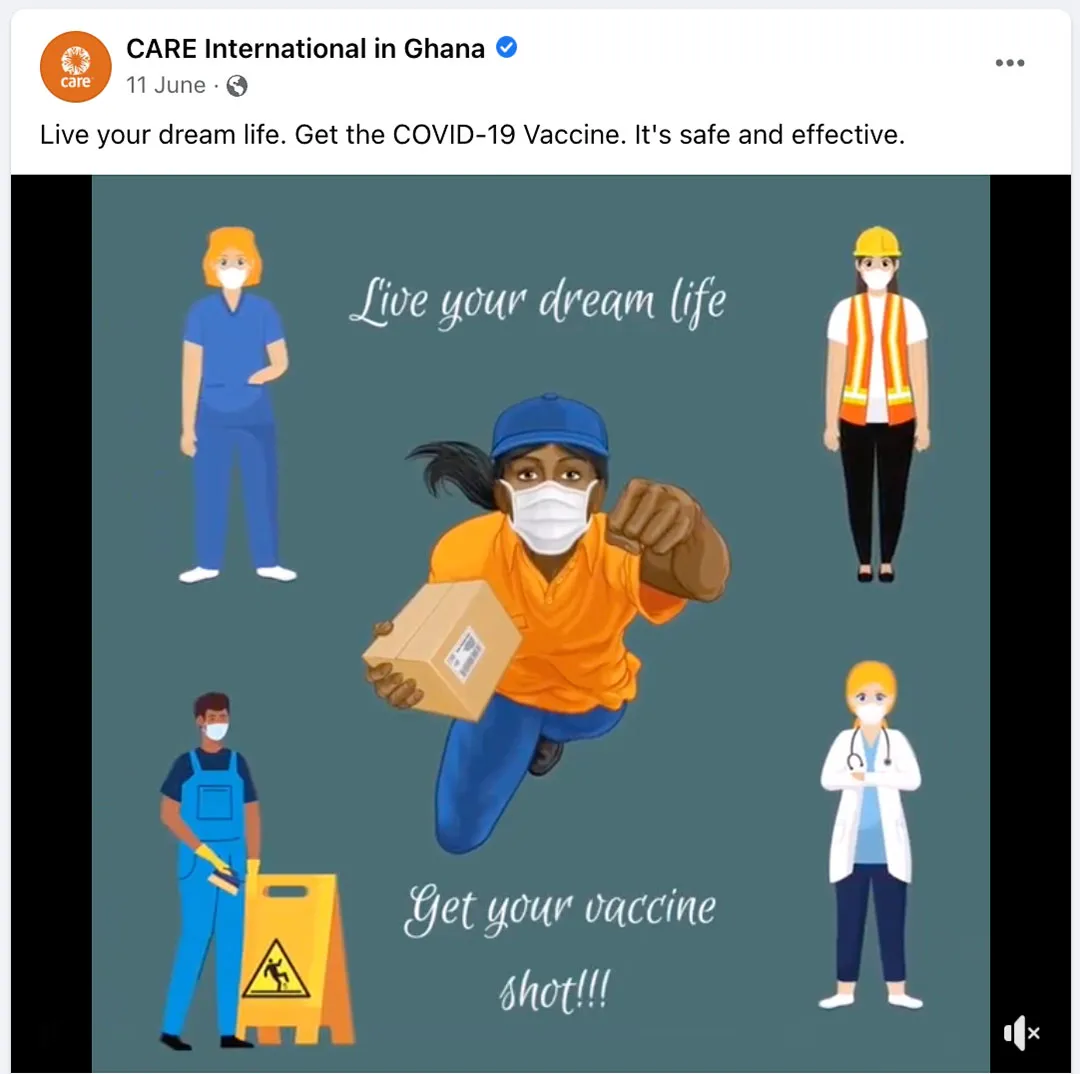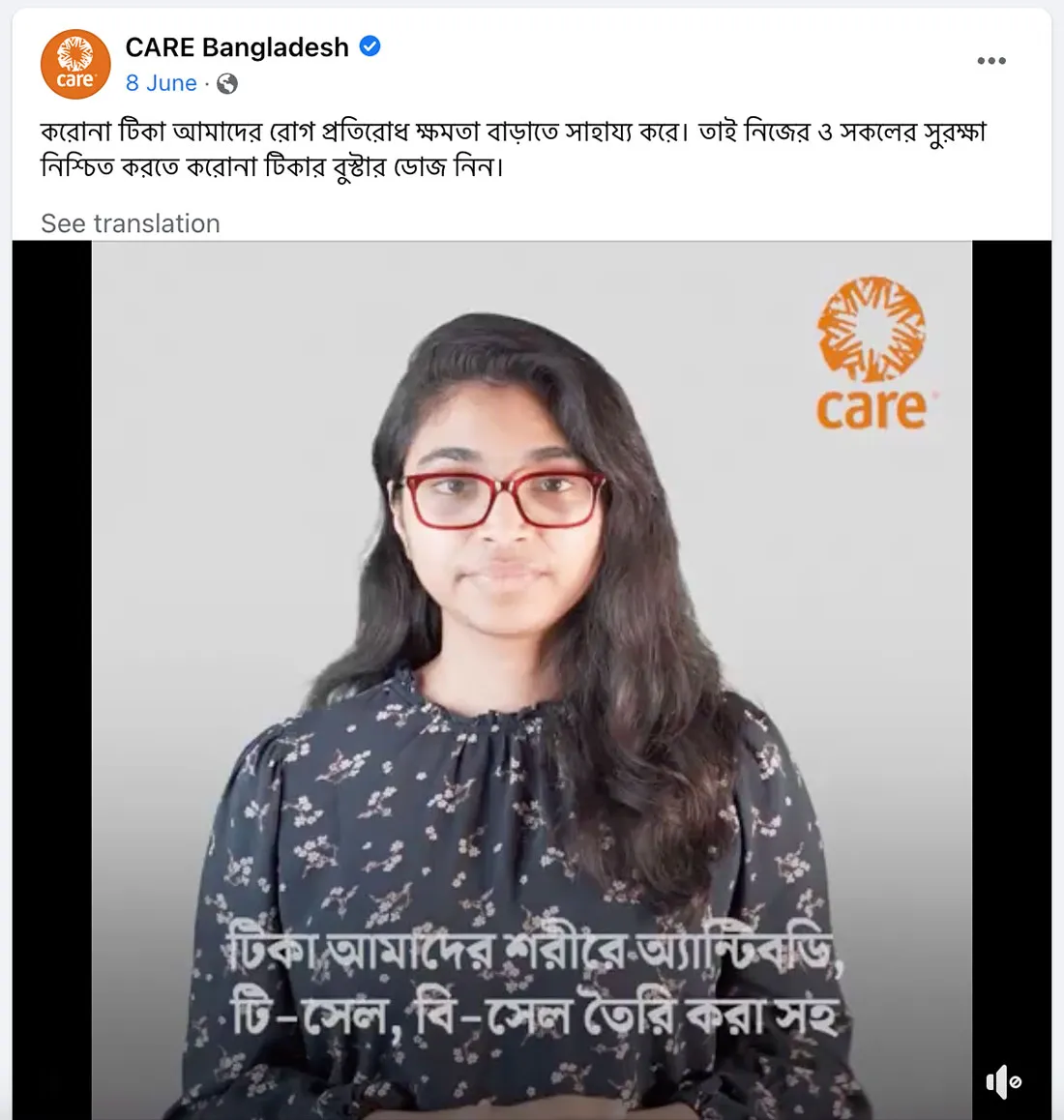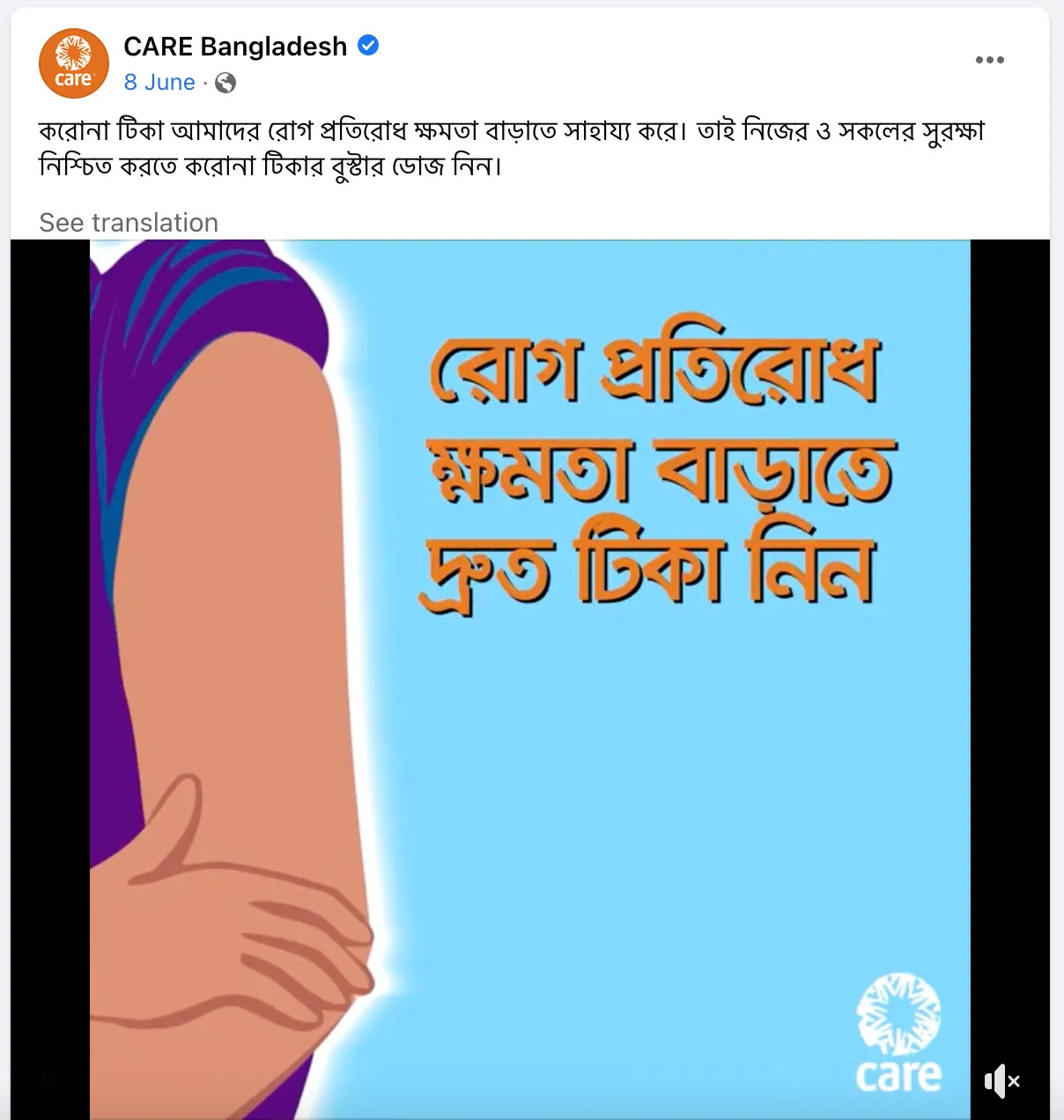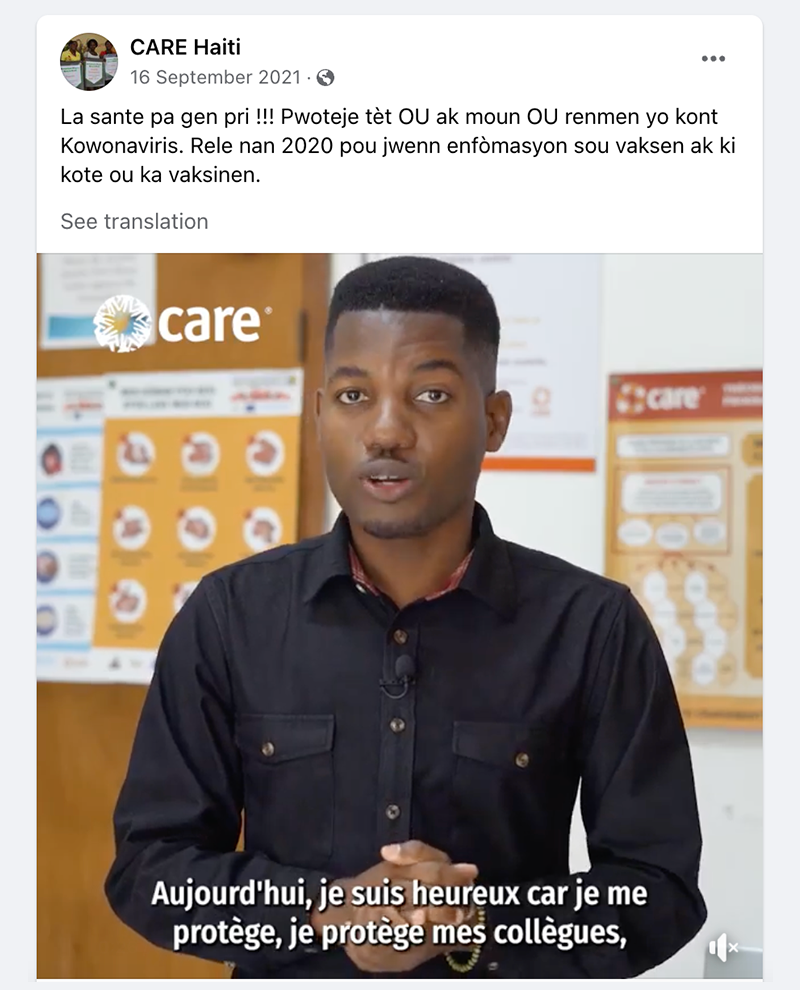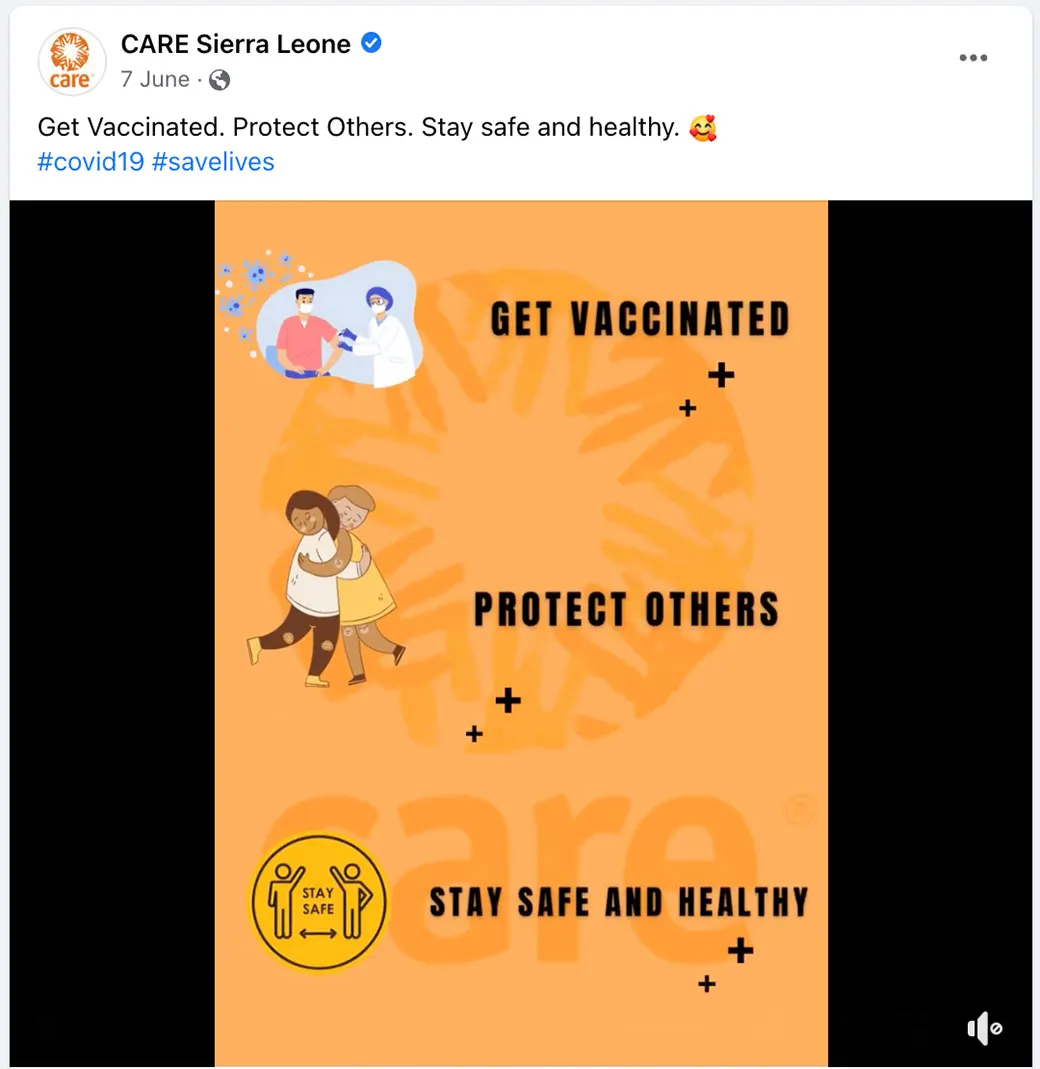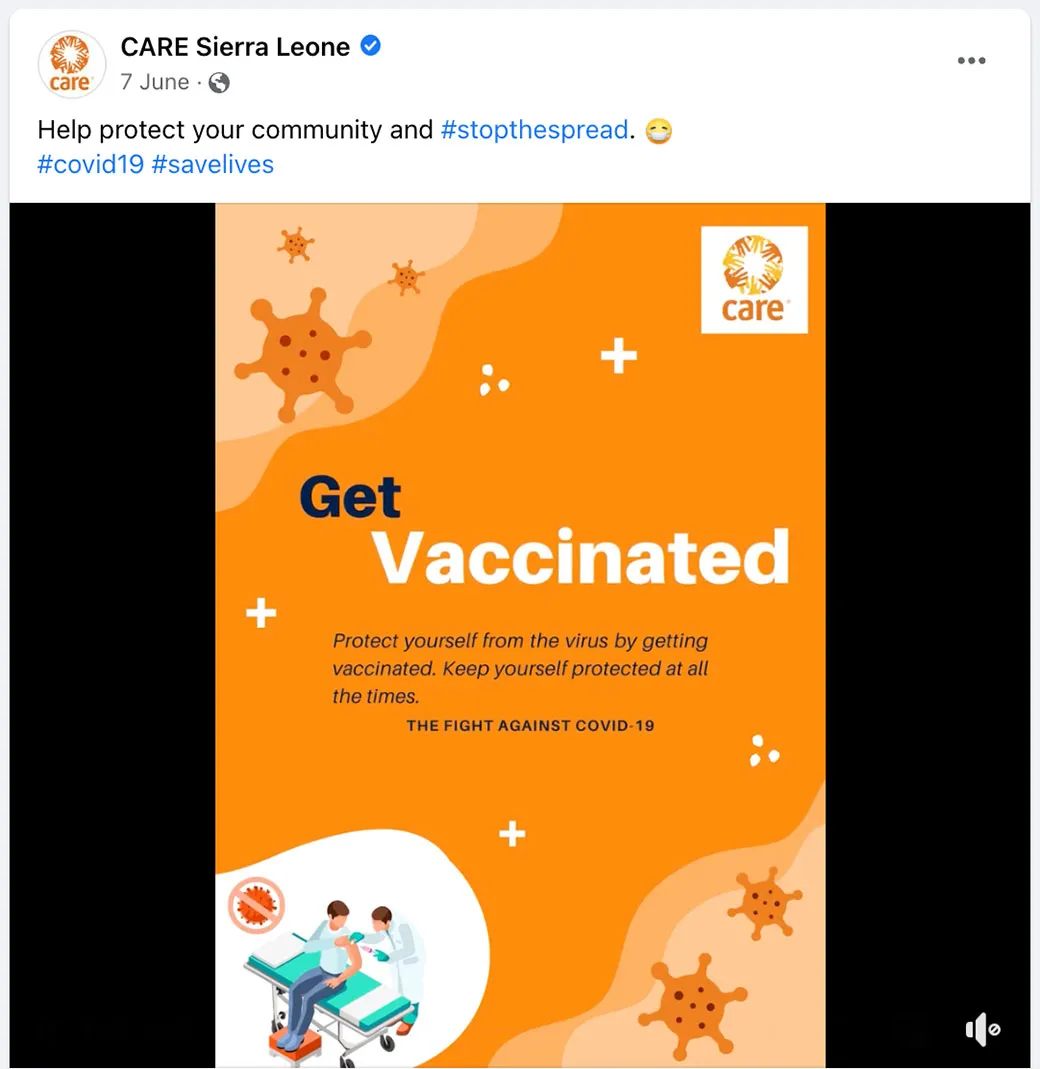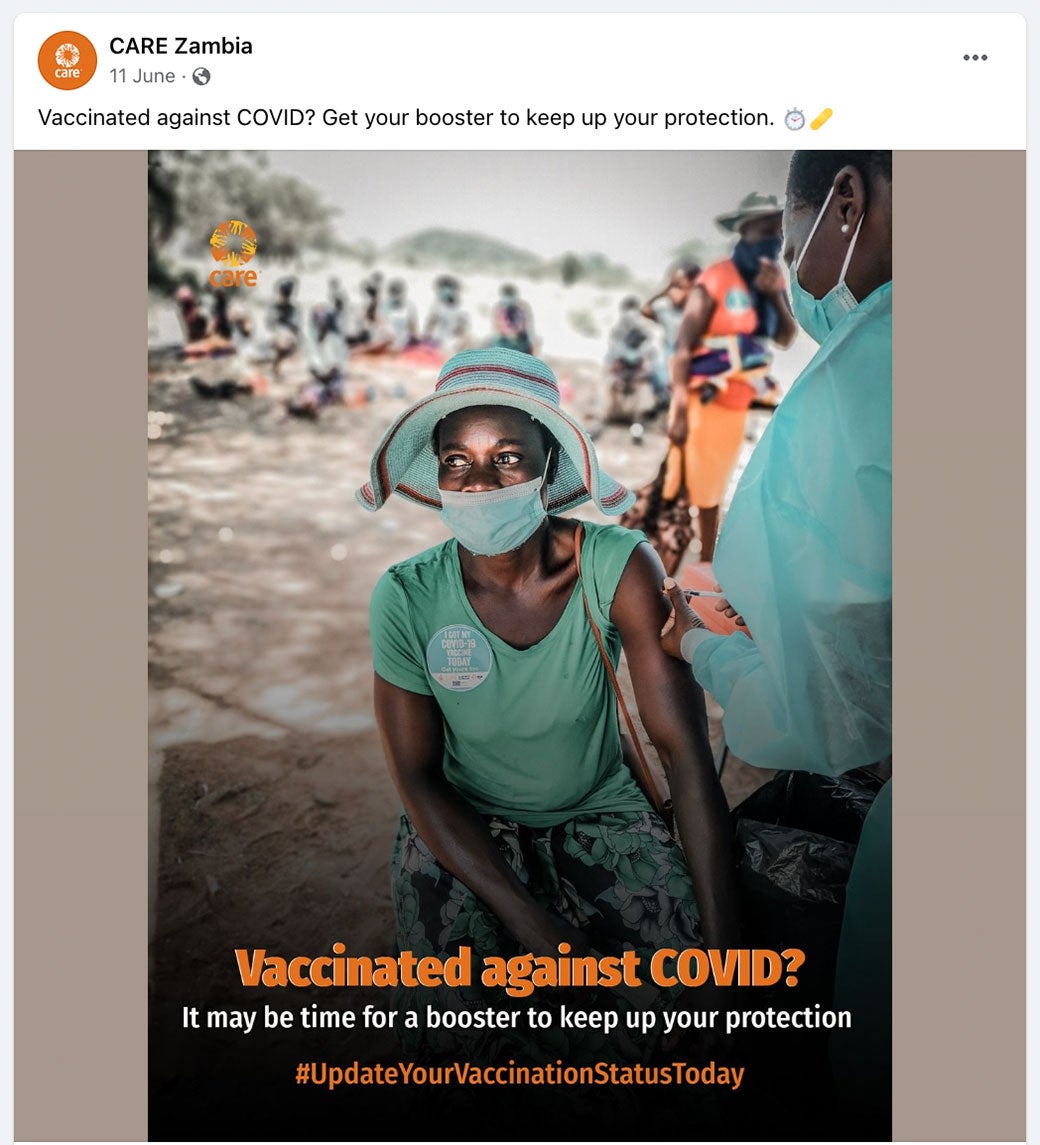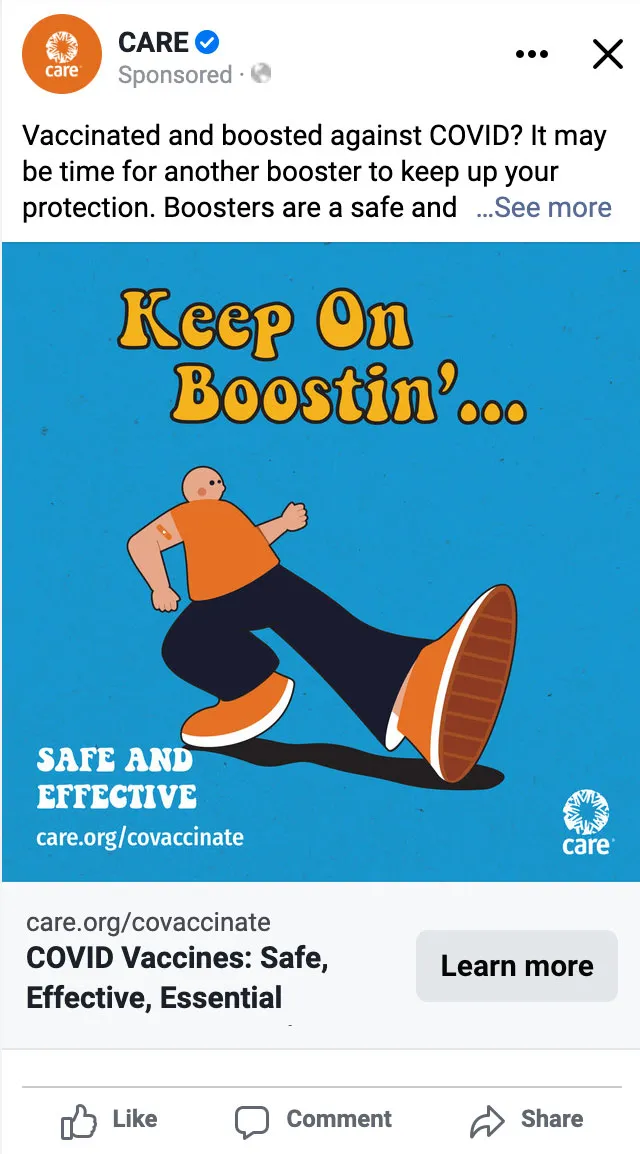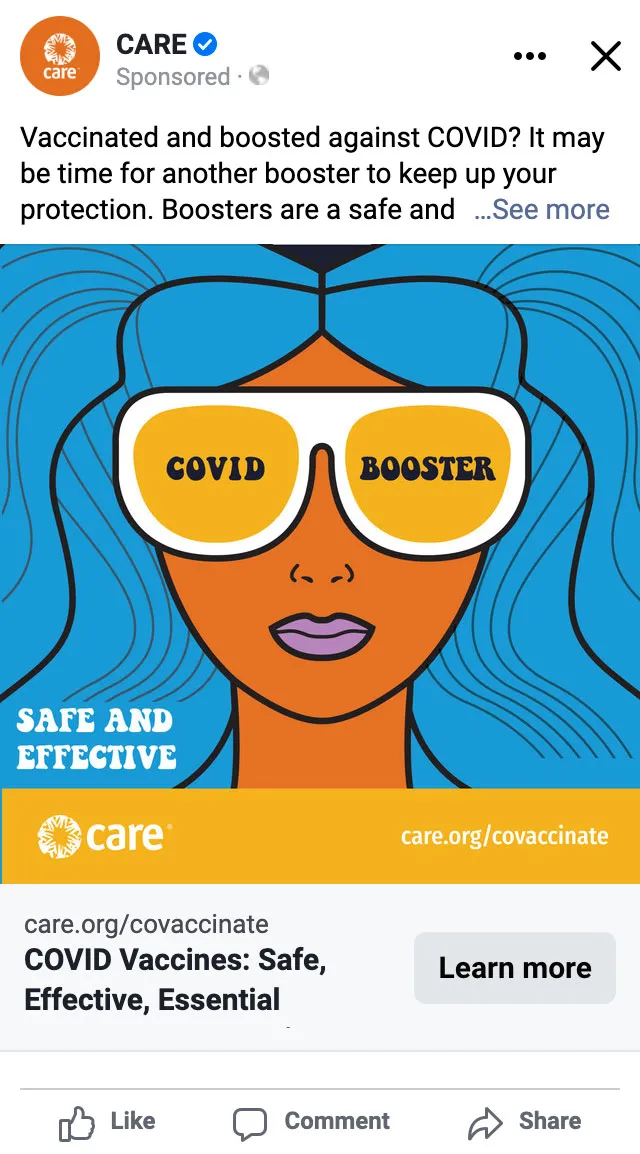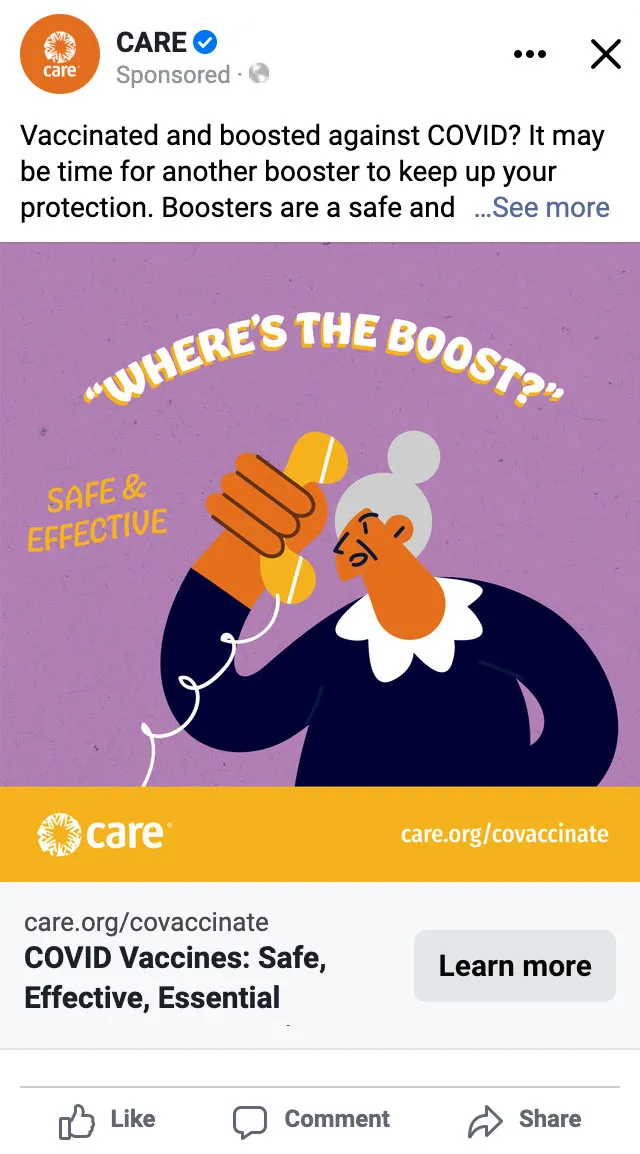More than two years into the COVID-19 pandemic, the virus continues to spread through our global communities with ever-evolving variants that threaten our health, education, and livelihoods. Continuing CARE’s long-standing work in public health and expanding upon our formative social and behavioral change communication (SBCC) campaigns launched in 2021 in partnership with Meta, CARE ran a series of summer campaigns that promoted vaccine confidence and preventive practices in 16 countries across the globe.
TL;DR summary
- Overall, the campaigns had a 2.2% engagement rate, so over 8.5 million people across these countries engaged with our ads, whether it was through likes, comments, or shares.
- Among our campaign audience, it is likely that 2.5 million additional people expressed confidence that the vaccine was safe and important
- Country offices collaborated during campaign design, shared creatives, and adapted campaigns in real time to use the most effective messaging and ads
From June 13 to July 18, CARE launched creative ad campaigns that were locally designed and led by country offices, which tailored content to suit their country contexts. During this campaign series, six country offices joined the practice of SBCC campaigning for the first time: Zimbabwe, Zambia, UK, Honduras, Ecuador, and Colombia. All other participating countries (Bangladesh, Ghana, Guatemala, Haiti, Iraq, Pakistan, Philippines, Sierra Leone, and USA) built on their existing experiences utilizing social media as an SBCC modality.
Among the multiple campaigns run, messaging included:
- Encouragement for audiences to get COVID-19 booster shots to be fully vaccinated;
- Reinforcement of the importance of the vaccine booster;
- Promotion of the safety of the vaccine booster; and
- Reminders about preventive and protective measures against COVID-19
These campaigns were measured by a brand lift study to test their efficacy in addressing each campaign’s target message of vaccine importance, safety, boosters, or preventive safety measures.
Global approaches and creative
In Latin America, four country offices – CARE Guatemala, CARE Honduras, CARE Colombia, and CARE Ecuador – joined forces to design a campaign with the theme #LoNormalEs, or “Normal is”, which was then adjusted to suit each country context.

